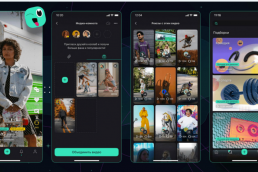Understanding your competition on social media isn’t just about keeping tabs on their every move—it’s about uncovering the secrets to staying one step ahead in the race for likes, shares, and engagement.
In today’s fast-paced digital jungle, staying ahead requires more than posting cat memes (though those can also help). By snooping—oops, I mean strategically analyzing—what your competitors are doing right (and wrong), you can uncover golden insights to level up your brand’s game.
Ready to become a social media detective? Here are six winning ways to crack the social media competitor analysis code.

1. Identify Your Competitors
The first step in conducting a thorough social media competitor analysis is identifying who you’re against. Begin with the obvious: your direct competitors. These businesses offer products or services similar to yours and target the same audience. Think of them as your brand’s sparring partners in the digital arena—what are they doing to win over customers, and how can you do it better?
But don’t stop there—cast a wider net by considering your indirect competitors. These brands might not offer the same products or services but still compete for your audience’s time, attention, and wallets.
For example, if your niche is eco-friendly products, indirect competitors might include brands advocating for sustainability, even if they sell entirely different items like clothing or energy solutions. Their messaging and content could pull in the same green-minded crowd you want to attract.
Identifying both direct and indirect competitors ensures you have a complete picture of the competitive landscape. After all, understanding who’s in the spotlight—and who’s waiting in the wings—helps you position your brand to shine brighter.

2. Analyze Their Content Strategy
Keeping an eye on the content your competitors churn out is like peeking into their playbook—without the awkwardness of actually stealing it. By examining what types of content they’re posting—whether it’s blogs, videos, infographics, or even memes that take off faster than a viral cat video—you can uncover valuable clues about what your shared audience loves.
Don’t stop there; dive deeper into their posting habits, from how often they share updates to the platforms they dominate.
Then, play the numbers game.
Which of their posts rake in the most likes, shares, and comments?
Are their videos pulling in views, or are infographics stealing the spotlight?
This engagement detective work can help you spot the golden trends and formats that hit the mark. With this intel in hand, you’ll be perfectly poised to level up your content strategy and outshine the competition.

3. Examine Their Audience Engagement
Engagement metrics are like the heartbeat of a brand’s social media presence—they reveal how well it truly connects with its audience. Take a closer look at how your competitors interact with their followers. Are they quick to respond to comments and messages or leave their audience hanging? Do they spark meaningful discussions, share user-generated content, or keep the conversation lively?
Pay attention to the tone and style they use in these interactions. Are they professional, polished, laid-back, casual, witty, humorous, or empathetic and supportive? These subtle details often make the difference between a brand that feels distant and one that feels approachable.
By studying these nuances, you can gain valuable insights into what resonates with your shared audience. Use this knowledge to shape your engagement strategy, making it more authentic, relatable, and aligned with your brand voice—because connecting with your audience is about more than just likes; it’s about building lasting relationships.

4. Review Their Social Media Advertising
Advertising is a significant component of any social media strategy. Investigate the types of ads your competitors are running. What platforms are they using for their ads? What budget do they allocate to their campaigns?
Pay close attention to their advertisements’ visuals, ad copy, and calls to action. This analysis can reveal trends and effective tactics you can incorporate into your advertising efforts. Moreover, tools like Facebook Ad Library can provide transparency in your international competitors’ ad strategies.
Exploring competitors outside your local market can offer fresh perspectives and innovative strategies. Analysing international competitors can help you identify global trends and practices that have not yet reached your market. This broader view can inspire new ideas and approaches for your social media efforts.
To analyse international competitors effectively, identify leading brands in your industry from various countries. Look at their social media presence, the platforms they prioritise, and engagement levels. Take note of any unique strategies or content types that could be adapted to your local market.
You might encounter geographical restrictions when accessing international competitors’ social media profiles. This is where using a VPN, such as Surfshark VPN, can be highly beneficial. A VPN allows you to change your IP address, making it appear you are browsing from a different country. This way, you can access content and profiles that might otherwise be restricted, giving you a fuller picture of your global competition.

6. Utilize Competitor Analysis Tools
Doing social media competitor analysis without the right tools is like trying to bake a cake without measuring cups—it’s messy, and you’re bound to miss the sweet spot. Fortunately, platforms like Hootsuite, Sprout Social, and BuzzSumo serve as your digital sous-chefs, offering the features you need to track competitors’ activities, spot emerging trends, and crunch performance numbers with ease.
These tools don’t just skim the surface; they reveal insights like posting schedules, top-performing content, and even audience demographics. Think of them as your secret agents in the social media game, saving you time while uncovering data that would take ages to gather manually.
Remember, social media competitor analysis isn’t a one-and-done kind of deal—it’s an ever-evolving process that demands patience, creativity, and a dash of competitive spirit. From identifying viral content trends to decoding audience behaviour (or even sneaking past geo-restrictions with VPNs to study international players), these methods are your ticket to staying ahead of the social media curveball.
Kamran Shukurlu
Kamran is a T-shaped eCommerce Digital Marketer and Content Strategist with 9+ years of experience in 30+ industries. A few of the companies that benefited from his services: Leo Burnett, Translated, Airbnb, Samsung, Huawei, etc.
Related Posts
March 24, 2025
Leveraging X’s Subscription Feature for Monetisation
March 13, 2025
Maximising Engagement with Instagram’s New DM Features
February 22, 2025
LinkedIn Polls: How to Use Audience Insights to Boost Engagement
February 12, 2025
Pinterest for Influencers: How to Monetise Your Audience
December 24, 2024
TikTok Duets and Stitch: Innovative Ways to Collaborate and Engage
December 13, 2024
Unlock viral pins with Click-Worthy Pinterest graphics
November 23, 2024
TikTok Advertising Best Practices
October 25, 2024
How to Use Instagram Broadcast Channels for Brand Engagement
October 11, 2024
Using Augmented Reality Filters in Social Media Campaigns
October 4, 2024
Why Instagram Is Good for Marketing: Engaging Your Audience
September 17, 2024
The Impact of Smooth Transactions on Your Brand Reputation
September 11, 2024
Building Brand Loyalty Through Private Social Media Groups
September 2, 2024
Creating Shareable Personalised Content
August 28, 2024
The Secret TikTok Viral Recipe in 2024
August 17, 2024
Harnessing the Power of User-Generated Content in 2024
August 8, 2024
Creating an Effective Social Media Content Strategy
July 18, 2024
Social SEO: Optimising Your Content for Discovery
July 8, 2024
The Comeback of Long-Form Content
June 5, 2024
How to Import Sounds From TikTok to Instagram?
May 21, 2024
9 TikTok Challenges List And TikTok Trends
February 24, 2024
Pinterest Account Suspended Appeal – How To Do It Right?
February 3, 2024
How to Make Money With Instagram Theme Pages In 2024
January 11, 2024
Resort And Hotel Digital Marketing Campaign Strategy And Ideas
December 26, 2023
New Year and Christmas Interactive Posts and Ideas For Social Media
December 8, 2023
B2B Community Management: Unpopular Opinion To Level Up
November 23, 2023
Feel Good Friday Social Media Posts And Wishes
October 6, 2023
How to Stream Games on TikTok With TikTok Stream Key
September 15, 2023
Creating an Effective Content Calendar
September 15, 2023
10 Tips to Optimize Facebook Page for SEO and Reach More People
September 4, 2023
How to Go Live on TikTok Without 1000 Followers In 2023
August 14, 2023
How Much Does IG Models Make And How To Become One
June 26, 2023
How To Get Verified On LinkedIn In 2023?
March 25, 2023
How to Create a Facebook Group Funnel to Drive Leads
March 19, 2023
How to Mass Archive Instagram Posts in 2023 + Unarchive
March 13, 2023
8 Social Media Community Building Strategies For 2023
February 18, 2023
How To Make Money On Instagram With 500 Followers
February 18, 2023
How to Go Live on LinkedIn – Best Practices and Guides
February 8, 2023
Instagram Guides Examples and Ways to Use Them
February 8, 2023
How to Schedule Instagram Posts Without Third-party App
January 22, 2023
Growth Hacking for Instagram to Get More Followers in 2023
January 20, 2023
How To Upload GIFs on Twitter in 2023
January 3, 2023
What To Do When you go Viral on Instagram
December 23, 2022
How to Spy on Competitors’ Facebook Ads For Free (6 Tools)
December 22, 2022
How to Get More Views on LinkedIn – 10 Tips to Reach More People
December 19, 2022
What To Do Before and After Posting On Instagram
December 14, 2022
How Instagram Search Works: A Comprehensive Guide In 2022
November 15, 2022
Twitter Spaces Analytics: Ultimate Guide to Your Space Insights
November 13, 2022
20 Viral Instagram Reels Hooks To Keep People Watching
October 29, 2022
How To Speed Up Existing Video For Instagram Reels – FOR FREE
October 16, 2022
How to Use Twitter Advanced Search Tool on Mobile
October 16, 2022
7 Instagram Mistakes to Avoid & Here’s Why
October 9, 2022
10 Proven Instagram Story Ideas to Engage Your Audience
September 23, 2022
Social Media Shopping in 2022: What it Promises for Small Businesses
September 20, 2022
Tips to Create a Successful Hashtag Campaign
September 8, 2022
The Top 9 Instagram Tools That Can Boost Your SME’s Visibility
August 28, 2022
How to Regram: The Art of Reposting on Instagram
August 11, 2022
A Checklist to Launch a Rebrand on Social Media
August 7, 2022
The Whys and Hows of Facebook Video Ads
August 7, 2022
How To Write Good Instagram Captions
July 27, 2022
How to Plan Your Social Media Campaigns
May 4, 2022
10 Social Media Myths To Unlearn in 2022
April 11, 2022
Twitter Analytics Tools to Level Up Your Game
March 14, 2022
Monthly Social Media Updates And News – February 2022
February 23, 2022
Social Media in the times of COVID-19: Adapting to a New Normal
February 14, 2022
Monthly Social Media Updates And News – January 2022
February 2, 2022
Optimise Google My Business: An In-depth Guide to Get it Right
January 19, 2022
9 Tips to Sell on Pinterest: Your Branding And ROI Booster
January 12, 2022
Monthly Social Media Updates And News – December 2021
December 10, 2021
Risks And Dangers of Buying Instagram Followers
December 8, 2021
Monthly Social Media Updates And News – November 2021
November 2, 2021
Monthly Social Media Updates And News – October 2021
October 14, 2021
Monthly Social Media Updates And News – September 2021
October 1, 2021
Brief 18 Twitter Hacks You’ll Wish You Knew Earlier
September 23, 2021
Instagram Pre-Launch Strategy 2022: A Proper Guide for Your Product
September 14, 2021
Monthly Social Media Updates And News – August 2021
September 8, 2021
15 Social Media Post Types to Keep Your Content Engaging
September 8, 2021
How to Sell on Facebook Shops and Facebook Marketplace in 2023
August 16, 2021
Driving Traffic From Twitter Straight to Your Blog in 2022
August 13, 2021
The ABCs of Using LinkedIn Videos Like a Pro in 2022
August 11, 2021
Monthly Social Media Updates And News – July 2021
July 29, 2021
Spiral Up Your Engagements With Instagram Carousels
July 17, 2021
Monthly Social Media Updates And News – May 2021
July 5, 2021
How to Mass Delete Instagram Posts in 2022?
April 29, 2021
Monthly Social Media Updates And News: March 2021
April 17, 2021
Latest Social Media Updates And News – 2022
April 17, 2021
Monthly Social Media Updates And News: February 2021
March 31, 2021
How to Choose the Best Competitor Analysis Framework
March 1, 2021
Monthly Social Media Updates And News: January 2021
February 21, 2021
How To Get Unlimited Free Leads For Any Business In UK
February 20, 2021
How to Find Brands That Collaborate With Small Influencers
February 4, 2021
Web Content Development 101 For Small Businesses
January 28, 2021
Monthly Social Media Updates and News: December 2020
January 13, 2021
How To Add A Link To Instagram Story Without 10K Followers
December 14, 2020
6 Testimonial Examples And How To Ask For Them
December 11, 2020
IG Line Break Generator: No Need For it Anymore? (2022)
December 2, 2020
Monthly Social Media News And Updates: November 2020
April 22, 2020
Social media marketing for recruitment agencies
December 23, 2019
How to market your podcast on social media
October 31, 2019
Account-based mindset vs. lead-based marketing
October 22, 2019
The benefits of starting your own podcast
October 14, 2019
What’s the LinkedIn Social Selling Index? (and why you need it)
October 8, 2019
7 ideas to network effectively – and locally
September 26, 2019
5 tips from an influencer to unlock your potential
September 16, 2019
How to create an effective Facebook ad: 7 easy tips
September 7, 2019
3 inspiring marketing campaigns with awesome results
September 1, 2019
Everything you need to know about lead generation
August 28, 2019
Can my brand benefit from a social media calendar?
August 13, 2019
3 basics of KPIs: what to measure and why?
August 9, 2019
5 Story Highlight ideas to totally revamp your Instagram
July 31, 2019
The good, the bad, and the funnel
July 24, 2019
The basics of content marketing – why you need it
July 18, 2019
Primark – how the brand uses social media
July 10, 2019
The evolution of Twitter for social media marketing
July 7, 2019
Discover 3 benefits of WhatsApp Business!
June 28, 2019
How Lululemon uses social media: 5 ideas
June 24, 2019
New Instagram @shop and how it works
June 17, 2019
5 foolproof tools to create a buyer persona
May 29, 2019
3 burning social media trends to watch out for
May 23, 2019
7 ingredients every entrepreneur needs to have
May 13, 2019
5 Social Media Tools: Marketing Made Easy!
April 15, 2019
Wanna kickstart your landing page? 3 reliable tools!
March 26, 2019
3 video marketing tricks to boost engagement
February 26, 2019
A five-star femmepreneur – meet Gretta van Riel!
February 15, 2019
Why Twitter is essential – revamp your marketing strategy today!
February 7, 2019
SEO for Newbies: The Basics
January 22, 2019
4 amazing inbound marketing tools to try now!
January 16, 2019
Everything about ecommerce, decoded!
January 11, 2019
Influencer marketing: why is it crucial?
January 7, 2019
How social media is changing your brain
January 2, 2019
Choosing a signature colour for your brand
December 28, 2018
Advanced Instagram for startups: an effective step-by-step guide
December 1, 2018
Instagram from Scratch!
November 22, 2018
Elevate your Brand with these 4 New Linkedin Tools
January 15, 2018
5 Ways Social Media Can Help Your Small Business In 2018
September 25, 2017
7 indispensable social media tools for small businesses
September 1, 2017
September 2017: Social Media Roundup
February 2, 2017
Our new promotional video
January 17, 2017
Why your business needs to be active on social media
November 3, 2016
The Top 10 Small Fashion Brands on Instagram
September 29, 2016
Hоw Tо Grоw Yоur Smаll Business Uѕing Social Media
September 26, 2016
How can I use social media for customer service?
September 20, 2016







































































































































































































